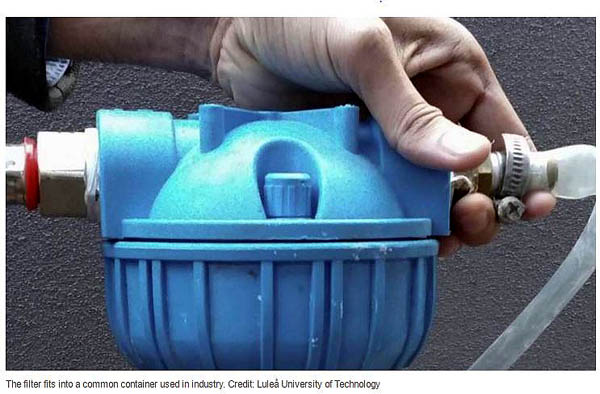Nanocellulose Water Filters Found to be Highly Effective
According to a recent report published on Phys.org (U.K.), filters of nano-cellulose have been tested in two Spanish factories and a Spanish water company, and are found to be highly effective. The tests conclude the E.U.-funded project Nano Select, led by Luleå University of Technology. Filters have been scaled up to the size needed to purify water from industry and public waterworks, providing positive health and environmental effects.
"The technology is ready and we have demonstrated through field trials that it works. Now it is up to industry to take over," said Aji Mathew assistant professor at Luleå University of Technology (Sweden) who is coordinating the project Nano Select.
The last step in the project Nano Select was testing upscaled nano-filters at an factory for leather goods, at a water treatment plant in Spain, and in the Spanish water company Acondaqua Ingeniería del Aqua SL.
Nano-filters are made from nanocellulose that is furled in a sheet of several layers. Nanofilter rolls (modules) are made of paper with a large suction capacity that is based on nano-cellulose and has very good properties compared with conventional industrial filters. They are biobased and biodegradable, with very high performance. The composition of nanocellulose determines the filtration ability. The three different nano-filters that scientists tested have the ability to filter out the paint residues in the textile and printing industries, metal ions from the mining and steel industries, and the nitrates present in the water supply.
The researchers delivered a filter of the correct size to fit filter housings and filter cartridges that are already used in industry. There is a great interest in the project's findings. In addition to the forest industry, large companies like Swedish LKAB and the British retail giant Marks & Spencer are said to be interested.
"I'm beginning to talk to the Swedish paper industry to see if they are interested in starting a pilot project to optimize further and thus get filters commercially viable. From now on, the industry must take the initiative to scale up and lead the development from where our research stopped," said Aji Mathew.
She believes that a commercialization process bringing the filters to market may take three to five years.
TAPPI
http://www.tappi.org/

